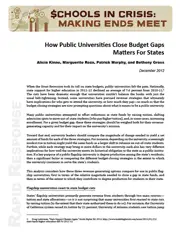Cuts to support for higher education have prompted some universities to attempt to offset reductions in state funds by raising tuition, shifting admission spots to more out-of-state students, and increasing enrollment.
For a given budget gap, these strategies should be weighed both for their revenue-generating capacity and for their impact on the university’s mission to serve the state’s students.
This analysis considers how these three revenue-generating options compare for use in public flagship universities, first in terms of the relative magnitude needed to close a gap in state funds, and then in terms of the extent to which they contribute to degree production for students in their state.






